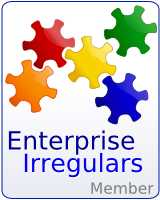SAP expands CRM On-Demand with service module
With all the press that Salesforce.com (mostly rightly) gets, it's important to point out that the target market for SAP's On-Demand product is different. (Keep in mind SFdC's average number of users is around 20). The below is from my post on the initial launch.
Sales target- Groups/divisions within large enterprises with more then 100 users- upper segment of mid market- Non-SAP users among current SAP clients are major target- however, need not be a mySAP or R/3 client
-- Shai made a point that there are 60MM potential users. SFdC and Siebel on-demand have only several hundred thousands (less then 1%). Wide open market.
--Shai was asked why the upper mid-market was the first target. He answered that we had done the segmentations and that it was felt that this was the best place to start. While not specifically addressing downmarket, he did say that other segments would be addressed in the future. That was about as specific as I remember him being.
This is not to suggest that the two products will not compete (more) in the future. Salesforce.com has been vocal about their desire to get larger enterprise clients and SAP is interested in moving down market. My sense, however, is that for the next couple of years, these products won't be going head to head.
BTW, what the heck are services capabilities?
The new capabilities include service ticket management, allowing customer service agents to monitor and comply with service level agreements. With multi-level categorization, agents can determine service levels and distribute service tickets based on priority, status, product and account type.
[SAP CRM On-Demand][Salesforce.com][CRM][SaaS]






